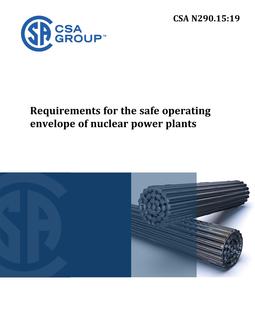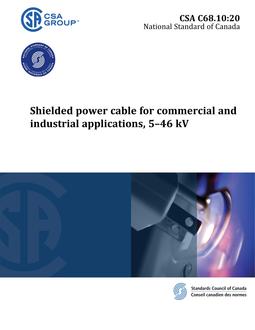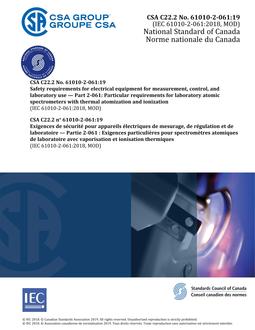Click here to purchase
Preface
This is the first edition of CSA N288.8, Establishing and implementing action levels for releases to the environment from nuclear facilities.
The purpose of this Standard is to provide requirements and guidance to develop and implement action levels for releases from a final discharge point at Class 1 nuclear facilities and uranium mines and mills. Compliance with this Standard will allow facilities to manage effluents in accordance with regulatory requirements.
The CSA N-Series Standards provide an interlinked set of requirements for the management of nuclear facilities and activities. The CSA N286 Standard provides overall direction to management to develop and implement sound management practices and controls while the other CSA nuclear Standards provide specific technical requirements and guidance that support the management system. This Standard works in harmony with CSA N286 and does not duplicate the generic requirements of CSA N286; however, it can provide more specific direction for meeting those requirements.
This Standard addresses the development and implementation of action levels that incorporates best practices in Canada and internationally.
Users of this Standard are reminded that additional and site-specific requirements might be specified by federal, provincial/territorial, or municipal authorities. This Standard is not a replacement for the requirements contained in any
a) applicable federal/territorial, or provincial statute, including the Nuclear Safety and Control Act; or
b) regulation, licence, or permit issued pursuant to an applicable statute.
Scope
1.1 Facilities
1.1.1 Types of facilities
1.1.1.1
This Standard addresses the establishment and implementation of ALs for Class I nuclear facilities and uranium mines and mills.
Notes:
1) In this Standard, any type of Class I nuclear facility or uranium mine and mill is included in the term “nuclear facilities”.
2) Conventional waste management facilities (e.g., landfills, incinerators, and sewage treatment plants handling non-radioactive material) that have final discharge points subject to ARLs on a Class I nuclear facility (or uranium mine and mill) are included in the scope of this Standard.
3) Not all Class I nuclear facilities, uranium mines and mills, or waste management facilities will need ALs. See Clause 5 on criteria for establishing ALs.
1.1.1.2
This Standard may also apply to the establishment and implementation of ALs for
a) Class II nuclear facilities;
b) facilities that use or store naturally occurring radioactive materials; and
c) any other nuclear facility that could benefit from ALs.
Note: In these situations, the operator of the facility is responsible for determining the applicability and suitability of this Standard in consultation with the AHJ.
1.1.2 Facility lifecycle
This Standard may be applied during the following phases of a facility lifecycle
a) site preparation, construction, and commissioning;
b) operations; and
c) decommissioning.
Notes:
1) The specifics of how an AL is developed and implemented may change over the lifecycle of the facility. For example, there is unlikely to be effluent during site preparation and construction. Therefore, ALs may be established but not implemented for that phase.
2) Elements of this Standard, such as the consideration and prospective development of ALs, may also be applicable during facility design.
3) The operational lifecycle of a Class 1 nuclear facility is assumed to include storage with surveillance.
4) A facility might have a licence post-decommissioning; however, it assumed there are no longer controlled releases, and, therefore, ALs are not required.
1.2 Operating conditions
The establishment and implementation of ALs described in this Standard are applicable for contaminants and physical stressors identified in an effluent monitoring program (e.g., CSA N288.5) during normal operations over the lifecycle of a nuclear facility.
Notes:
1) Any release resulting from a planned and controlled deviation from routine operational practice that is expected to occur once or several times during the operating lifetime of a nuclear facility or licensed activity is not typically considered to represent a loss of control event. However, these should be evaluated on a case- by-case basis (see Clause 6.5).
2) For the purposes of this Standard, AOOs might or might not represent a loss of control event.
3) Significant spills and leaks are not considered part of normal operations.
4) The physical parameter temperature is outside the scope of this Standard, as specified in Clause 1.3.2.
1.3 Contaminants, physical stressors, and final discharge points
1.3.1This Standard is to be applied to develop ALs at the final discharge point for those contaminants or physical stressors monitored in an effluent monitoring program.
Notes:
1) The effluent monitoring program is typically developed though CSA N288.5.
2) The contaminants or physical stressors that represent a potential risk or are the primary contributors to potential risk are known as COPCs or physical stressors, and are evaluated through CSA N288.6.
3) The contaminants and physical stressors include physical parameters.
1.3.2
The physical parameter temperature is outside the scope of this Standard.
1.4 Interpretation of data
This Standard provides guidance on the interpretation of data that is relevant to the development of ALs.
Note: Users are cautioned that the statutes, regulations, licences, and permits that govern a nuclear facility can impose requirements regarding data analysis and interpretation that differ from those described in this Standard. The operator of the nuclear facility is responsible for determining what data analysis and interpretations are necessary to confirm compliance with all statutes, regulations, licences, or permits that govern the operation of the nuclear facility.
1.5 Terminology
1.5.1
In this Standard, “shall” is used to express a requirement, i.e., a provision that the user is obliged to satisfy in order to comply with the standard; “should” is used to express a recommendation or that which is advised but not required; and “may” is used to express an option or that which is permissible within the limits of the Standard.
Notes accompanying clauses do not include requirements or alternative requirements; the purpose of a note accompanying a clause is to separate from the text explanatory or informative material.
Notes to tables and figures are considered part of the table or figure and may be written as requirements.
Annexes are designated normative (mandatory) or informative (non-mandatory) to define their application.
1.5.2
In this Standard, “shall be considered” or “shall consider” means that the user shall consider the possibility, make a decision, and document the reason(s) for that decision.
Note: Examples of decisions can include no action, operating procedures, design features.
Product Details
- Edition:
- 1st
- Published:
- 02/01/2017
- ISBN(s):
- 9781488304569
- Number of Pages:
- 80
- File Size:
- 1 file , 3.2 MB
- Product Code(s):
- 2424649, 2425083, 2424649, 2424649


